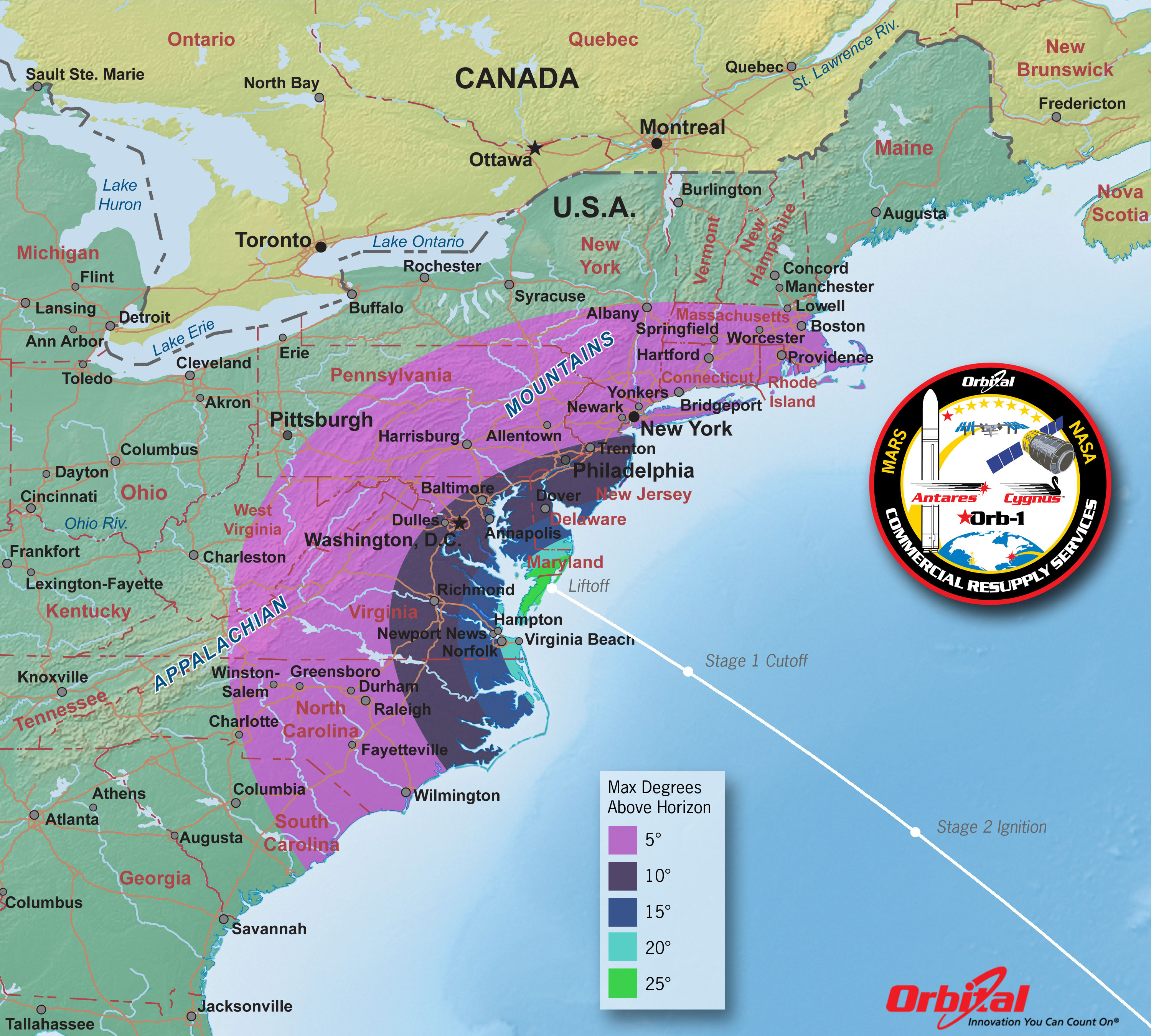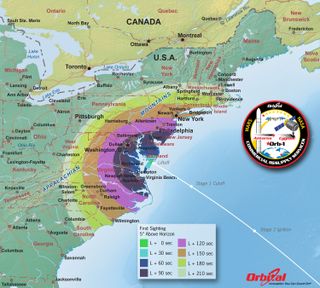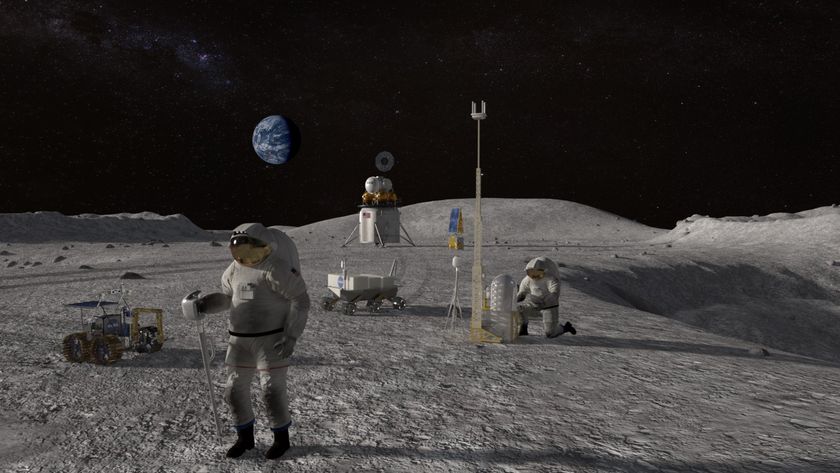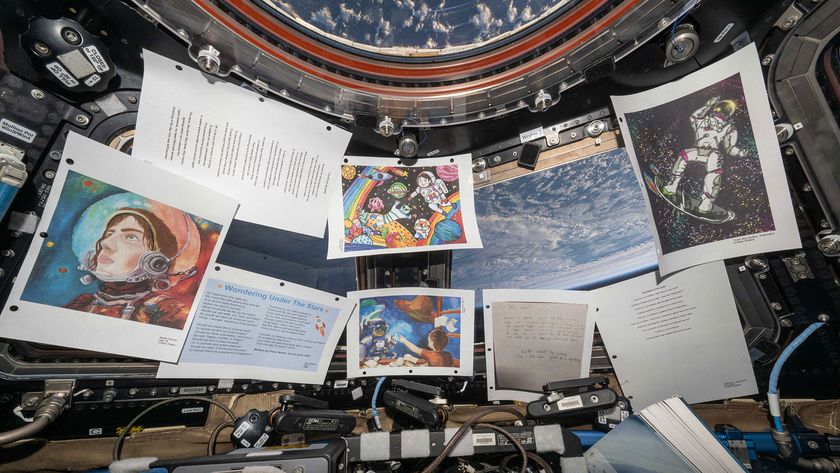
Editor's Note (Jan. 7): Orbital Sciences will launch of the Cygnus cargo ship to the International Space Station at 1:32 p.m. EST (1832 GMT) on Jan. 8, and may be visible in the daytime sky for some observers along the U.S. East Coast. The launch was delayed to allow spacewalk repairs to the orbiting lab's cooling system, and later due to extremely cold temperatures.
People along the east coast of the United States should get a great opportunity to see a rocket launch from their own backyards this week.
Weather permitting, observers from Massachusetts to the Carolinas could see an International Space Station-bound Cygnus spacecraft launch atop a two-stage Antares rocket Thursday (Dec. 19) night. The Orbital Sciences Corp. developed spacecraft and rocket are scheduled to lift off from pad 0A at the Mid-Atlantic Regional Spaceport (MARS) on Wallops Island, Va., at 9:19 p.m. EST (0219 Dec. 20 GMT).
This flight — called Cygnus CRS Orb-1 — is the first official resupply mission to the space station launched by Orbital Sciences under a $1.9 billion contract for eight cargo runs to the orbiting outpost with NASA. A Cygnus spacecraft successfully docked with the space station earlier this year during a test run. [Private Rocket Launch Visible from US East Coast on Dec. 19: Visibility Maps (Gallery)]
Cygnus' launch was scheduled for Wednesday (Dec. 18), however, a problem onboard the station forced Orbital Sciences to push the launch at least 24 hours to Thursday. NASA engineers still need to fix an issue affecting the vital cooling system responsible for keeping equipment on the orbiting laboratory cool before Cygnus will be able to dock with the station.
What to expect
If you don't have the chance to see the launch in person, you can watch it live online. You can watch live coverage of the Cygnus launch starting at 9 p.m. EST (0200 Dec. 20 GMT) on SPACE.com via NASA TV.
Get the Space.com Newsletter
Breaking space news, the latest updates on rocket launches, skywatching events and more!
Views of the rocket launch will be different depending on where you live on the East Coast. The further away you are from the launch site, the closer to the horizon the rocket will be. As a reference, your clenched fist held at arm’s length is roughly 10 degrees in width.
If a skywatcher is trying to spot the launch from New York City, for instance, the highest point Antares will reach is approximately 9 degrees above the horizon. It's unlikely that an observer will be able to view the launch when it's below 5 degrees above the horizon because buildings, vegetation, and other terrain features will probably get in the way. Orbital Sciences' Antares will reach 5 degrees above the horizon about 125 seconds after launch.
Editor's note: If you have snap an amazing photo of the Antares/Cygnus launch Thursday and would like to share it with SPACE.com for a possible story or gallery, send images and comments in to: spacephotos@space.com.
Antares' launch will be visible along the East Coast by virtue of the light emitted from its two stages. The first stage uses kerosene and liquid oxygen as propellants, powering two Aerojet AJ-26 engines, which are modified Russian-built NK-33 engines.
Antares should appear as a bright, moving star. Observers who use binoculars might be able to see a tiny V-shaped contrail.Because the first stage of Antares is liquid fueled, its ascent is slowerthan the Minotaur rockets that have launched from Wallops in the past few months. Antares will jettison its first stage once it has spent all its fuel, about 135 seconds after launch. This harmlessly breaks up in the atmosphere and falls into the Atlantic Ocean.

Then comes a coasting phase, which lasts about 212 seconds after the first stage shutdown; the rocket will be invisible during this time frame, followed by ignition of the second stage.
The second stage is a solid-fuel rocket, the Castor 30B. This second stage, along with the Cygnus spacecraft, is put into a low Earth orbit. Once it separates from the second stage, Cygnus will then use its own engines to continue on its mission to the space station. [Photos: Orbital Sciences' 1st Cygnus Cargo Mission to Space Station]
The second stage will appear farther downrange and at a lower elevation than where the first stage shutdown appeared. The trajectory appears to dip back toward Earth as the rocket moves further away from the observer and disappears beyond the horizon. The rocket, of course, is not returning to Earth — it is continuing its ascent, speeding higher and faster toward space.
Where to concentrate your gaze
- Eastern Half of South Carolina/North Carolina/Coastal Virginia:Liftoff to Stage 1 shutdown, primarily toward the northeast. Stage 2 ignition, for the Carolinas, east; coastal Virginia, southeast.
- Interior Virginia/Eastern half of West Virginia: Liftoff to Stage 1 shutdown, primarily toward the east. Stage 2 ignition, southeast.
- Maryland, Delaware, Pennsylvania: Liftoff to Stage 1 shutdown, primarily south-southeast. Stage 2 ignition, southeast.
- New Jersey/Southeast New York: Liftoff to Stage 1 shutdown, south. Stage 2 ignition, southeast.
- Southern New England and Long Island: Liftoff to Stage 1 shutdown, south-southwest. Stage 2 ignition, for Western Massachusetts, Connecticut and Long Island, southeast; for eastern Massachusetts and Rhode Island, south-southeast.
Viewing Details
Public viewing of the launch will be available at the NASA Visitor Center at Wallops. For more information about the Visitors Center, to include directions, see: http://www.nasa.gov/centers/wallops/visitorcenter/index.html#.UqipAqV1TqA
The Chincoteague National Wildlife Refuge/Assateague National Seashore will not be open to watch the launch.
Android users have the option of downloading the new "What's Up at Wallops" app, which contains information on the launch as well as a compass showing the precise direction for launch viewing. The app is available for download at: http://go.nasa.gov/17veCYT.
Joe Rao serves as an instructor and guest lecturer at New York's Hayden Planetarium. He writes about astronomy for Natural History magazine, the Farmer's Almanac and other publications, and he is also an on-camera meteorologist for News 12 Westchester, N.Y. Follow us @Spacedotcom, Facebookand Google+. Original article on SPACE.com.
Join our Space Forums to keep talking space on the latest missions, night sky and more! And if you have a news tip, correction or comment, let us know at: community@space.com.

Joe Rao is Space.com's skywatching columnist, as well as a veteran meteorologist and eclipse chaser who also serves as an instructor and guest lecturer at New York's Hayden Planetarium. He writes about astronomy for Natural History magazine, the Farmers' Almanac and other publications. Joe is an 8-time Emmy-nominated meteorologist who served the Putnam Valley region of New York for over 21 years. You can find him on Twitter and YouTube tracking lunar and solar eclipses, meteor showers and more. To find out Joe's latest project, visit him on Twitter.


